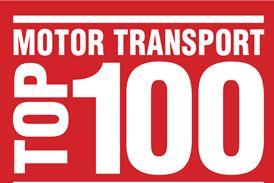Technical focus: there is manoeuvrability in longer semis

Producing a 15.65m longer semi-trailer that complies with manoeuvrability rules is one thing; building one that is a genuinely practical, real-world proposition is a different matter. So says Professor David Cebon, professor of mechanical engineering at the University of Cambridge and director of Cambridge Vehicle Dynamics Consortium (CVDC), a collaboration ...
This article is for registered users only
Please login or create a FREE account to read the full article
Want to read more?
Register now for free to access the full article.
To access our great content on the Motor Transport website and to get a free copy of our weekly Executive Brief newsletter.
Once registered, you’ll get access to:
- In-depth breaking news every working day of the year
- All the best careers advice for you and your business
- Profiles of every winner at the Motor Transport Awards
- The richest set of road transport industry data in the UK
- You may also be eligible for a free print or digital copy of Motor Transport











